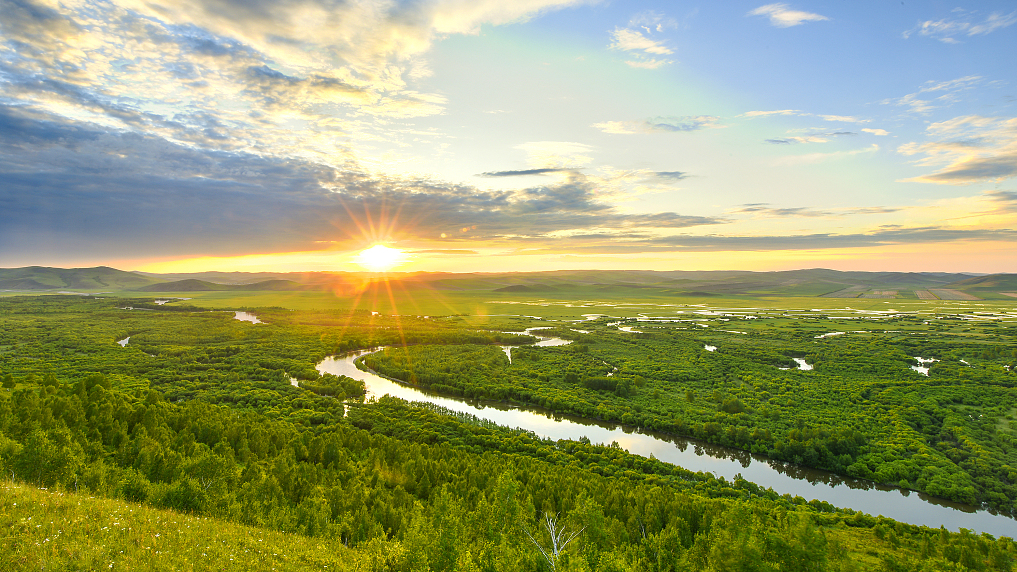Argun River

Flowing silently along the eastern China-Russia border, the Argun River, also known as the Ergune River, weaves a rich tapestry of culture and heritage that spans centuries. As a vital tributary of the Amur River, it has played a central role in shaping the identity and traditions of the diverse communities that inhabit its banks. In this comprehensive exploration, we delve into the cultural significance of the Argun, uncovering the customs, rituals, and stories that have been passed down through generations along its sacred waters.
The Historical and Geographical Context:
Before we can fully appreciate the cultural importance of the Argun River, it is essential to understand its historical and geographical context. Originating from the highlands of Inner Mongolia, the river winds its way for 1,620 kilometers, serving as a natural boundary between China and Russia before converging with the Amur River.
Throughout history, the lands surrounding the Argun River have been inhabited by a diverse array of ethnic groups, including the Mongols, Manchus, Russians, and indigenous peoples such as the Evenks and Daur. Each of these communities has left its own unique imprint on the cultural landscape of the region, contributing to the rich tapestry of traditions and customs that define life along the Argun.
Religious and Spiritual Significance:
For many of the communities that inhabit its banks, the Argun River holds deep religious and spiritual significance. It is revered as a sacred symbol of life and renewal, with rituals and ceremonies conducted along its shores to honor the natural world and seek blessings for the future.
Among the indigenous peoples of the region, shamanism has long been a central aspect of spiritual life, with shamans serving as intermediaries between the human and spiritual realms. The Argun is believed to be inhabited by ancestral spirits and nature deities, whose guidance and protection are sought through offerings and prayers.
In addition to shamanism, Buddhism has also played a significant role in shaping the religious landscape of the Argun River basin. Buddhist monasteries and temples dot the countryside, serving as centers of worship and learning for devout followers seeking enlightenment and spiritual fulfillment.
Cultural Traditions and Customs:
The cultural traditions and customs of the Argun River basin are as diverse as the people who inhabit it, reflecting a blend of influences from China, Russia, and indigenous cultures. From music and dance to cuisine and craftsmanship, the region is alive with vibrant expressions of identity and heritage.
One of the most enduring cultural traditions of the Argun River basin is the celebration of festivals and holidays. From the colorful Naadam festival of the Mongols to the solemn Orthodox Easter celebrations of the Russians, these events bring communities together to share in the joy of life and the blessings of the natural world.
Art and literature also play an important role in preserving and transmitting cultural heritage along the Argun. Folk songs and epic poems recount the heroic deeds of ancient warriors and kings, while traditional crafts such as woodcarving, embroidery, and pottery continue to thrive as expressions of creativity and craftsmanship.
Environmental Conservation and Cultural Preservation:
In recent years, efforts have been made to promote environmental conservation and cultural preservation along the Argun River. Recognizing the importance of safeguarding both the natural and cultural heritage of the region, governments, non-governmental organizations, and local communities have come together to implement sustainable development initiatives and protect sacred sites and traditional practices.
Conclusion:
In conclusion, the Argun River stands as a testament to the enduring power of culture and heritage to unite and inspire people across generations. From its humble beginnings in the highlands of Inner Mongolia to its majestic convergence with the Amur River, this remarkable waterway continues to nourish the body, mind, and spirit of all who dwell along its banks. As we strive to protect and preserve the cultural richness of the Argun for future generations, let us remember the timeless wisdom and traditions that flow like the waters of this sacred river.
Know More about the Argun River.
What are The Religious Places of the Argun River?
When Did The Argun River Basin Become a Focus?
Where is The Argun River Located?
Who Were The Key Historical Figures and Civilizations of The Argun River?
How to Reach Argun River?




